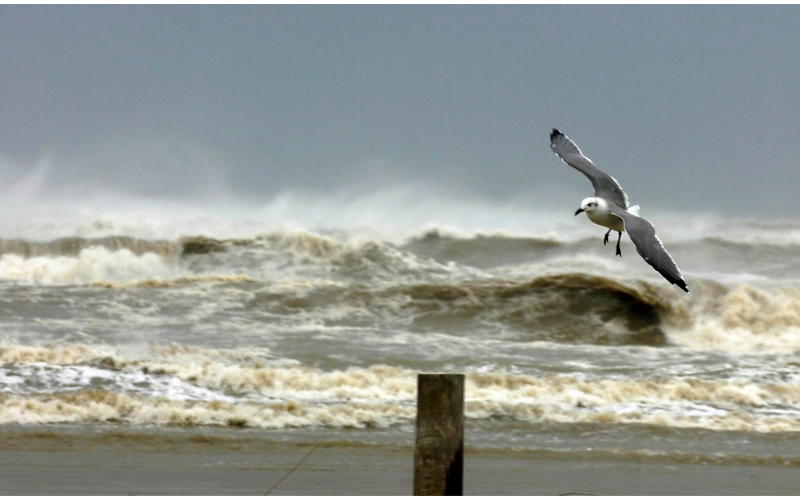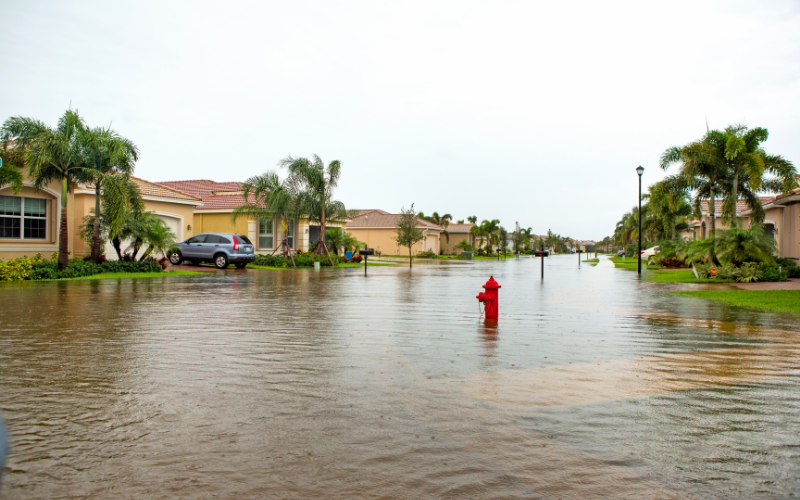Where is the Hurricane Zone? Know your Evacuation Zone!
11 June 2011About Hurricane Zones
Despite the devastation caused by hurricanes in recent years, the Atlantic hurricane zone lures travelers with low airfares and cheap hotel rates. The US hurricane zone includes popular travel areas like the Caribbean, the Gulf of Mexico, and the beaches along the Atlantic Coast during summer and fall.
Click here to see our updated list of the best cruise travel insurance plans.
Where do hurricanes occur?
Hurricanes typically occur within the latitudes of 8° and 20° north, also known as Hurricane Alley. In the Atlantic, this is the area of warm water stretching from the west coast of northern Africa to the east cost of Central America and the Gulf Coast of the southern US.
How do Hurricanes Form?
How hurricanes form is well know thanks to research. Hurricanes form over tropical ocean water in areas of high humidity, light wind, and warm surface temperatures on the sea. In fact, hurricanes rely on the temperature of the sea surface to be just right (the perfect temperature is around 26 degrees Celsius/78 degrees Fahrenheit).

Warm ocean water provides the energy a hurricane needs to grow in strength. Light wind over the ocean surface lets the hurricane grow as the wind is forced upward through the center of the storm clouds.
Fact: Hurricane storm surge is very strong and the activity churns the water and brings cold water up from below. The cooler water helps the power of the hurricane to weaken and even die out.
Where and How Often do Hurricanes Occur?
On average, 10 tropical storms occur each year in the Atlantic Ocean, Caribbean Sea, and Gulf of Mexico. Many of these storms remain over the ocean and do not reach land. About six of those storms develop into hurricane-level strength.
In the tropics, where hurricanes form, easterly winds called the trade winds will steer hurricanes toward the west. Hurricanes do not form too far from the equator (no farther than 5 degrees latitude) because they require the spin of the Earth and the resulting Corioles force to form.
Fun fact: The Corioles force generates a counterclockwise spin in the northern hemisphere, and the opposite clockwise spin in the southern hemisphere.
Average Number of Hurricanes by Year in the US
About five hurricanes strike the US coastline every three years. Of these two are typically major hurricanes with winds greater than 110 miles per hour. Hurricanes kill approximately 50-100 people every year.
Hurricanes can strike the US coastline anywhere from Texas all the way north to Maine. The typical hurricane is about 300 miles wide, but they can vary in size considerably. The eye of the hurricane is relatively calm and is typically 20-40 miles across.

Hurricane-force winds can extend outward from the hurricane about 25 miles for a small hurricane all the way to 150 miles for a large one. The strong winds can cause a wide swath of damage a good distance from the center of the storm. Even worse, these winds can cause other weather patterns, including tornadoes, that can increase the overall damage.
Hurricane Capital of the World
The title of ‘Hurricane Capital of the Caribbean’ goes to the island of Abaco in the Bahamas, where 42 severe hurricanes have occurred since 1951. Twenty of those were major hurricanes. A severe hurricane (also called a major hurricane) is defined as having winds of at least 111 miles per hour.

This is enough to incur damage on well-built homes and remove roofs. Many trees will be snapped or uprooted in a major hurricane, causing road blocks. Electricity and water will typically be unavailable for days to weeks after the hurricane passes.
Top 10 Caribbean Islands with Highest Number of Hurricanes
After Abaco, the 10 Caribbean locations with the highest number of severe hurricanes (categories 3/5) in the last 150 or so years are:
- Saba, Netherland Antilles (15/7)
- Grand Bahama, Bahama (15/3)
- Key West, USA (14/7)
- St. Eustatius, Netherland Antilles (14/7)
- Bimini, Bahamas (14/5)
- Nassau, New Providence, Bahamas (14/3)
- Nevis, West Indies (13/7)
- Habana, Cuba (13/7)
- St. Maarten/St. Martin (13/7)
- Tortola, British Virgin Islands (13/6)
See a full list of the islands and the number of hurricanes.
Top 10 US cities in the Hurricane Zone
The Atlantic Coast, the Gulf of Mexico, and the Hawaiian islands are the most vulnerable to hurricanes. The top 10 most hurricane-prone cities in the US are the following:
- Cape Hattaras, North Carolina
- Delray Beach, Florida
- Hollywood, Florida
- Deerfield Beach, Florida
- Boca Raton, Florida
- Florida City, Florida
- Grand Isle, Louisiana
- Ft. Pierce, Florida
- Miami, Florida
- Ft. Lauderdale, Florida
Top 10 Hurricane-prone Countries
According to the National Oceanic and Atmospheric Research Administration, the top ten countries with the most hurricanes since 1970 are the following:
- China
- Philippines
- Japan
- Mexico
- United States
- Australia
- Taiwan
- Vietnam
- Madagascar
- Cuba
Don’t overlook the rest of the globe
Many travelers overlook the Eastern Pacific hurricane season primarily because more people travel in and encounter the hurricanes of the Caribbean instead.
Hurricane Risks in the East Pacific
The western coast of Mexico is also subject to hurricanes and is just as closely monitored by weather experts and cruise line operators. Cruise ports such as Acapulco and Puntarenas have suffered serious hurricane damage in the past.
Hurricanes in the Southern Hemisphere
Australia, New Zealand and Hawaii also get their share of tropical cyclones each year. The southern hemisphere’s seasons are the opposite of those in the northern, of course, and their hurricane season peaks in March and April.
Hurricane Safety Tips
Be sure to get your hurricane preparation tips from a reliable source, like the National Weather Service. During a hurricane:
- Stay away from low-lying areas prone to flooding
- Stay indoors to avoid the strong winds
- Avoid staying in a mobile home – seek shelter elsewhere
- If your lodging isn’t on high ground, go higher or go to a shelter
- If public safety officials recommend evacuating, leave the area immediately
Related topics
- Saffir-Simpson Scale – explains the hurricane category levels
- Caribbean Hurricane Network – excellent resource for understanding hurricanes in the Caribbean
Damian Tysdal is the founder of CoverTrip, and is a licensed agent for travel insurance (MA 1883287). He believes travel insurance should be easier to understand, and started the first travel insurance blog in 2006.
